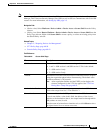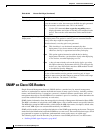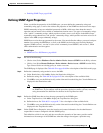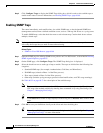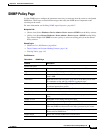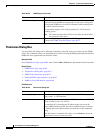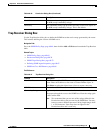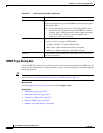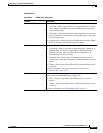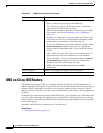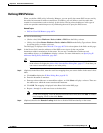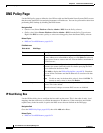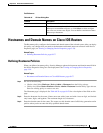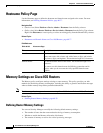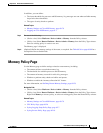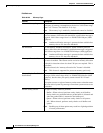
60-73
User Guide for Cisco Security Manager 4.4
OL-28826-01
Chapter 60 Router Device Administration
SNMP Policy Page
Field Reference
Table 60-32 SNMP Traps Dialog Box
Element Description
Standard SNMP Traps Enables or disables standard SNMP traps. Options are:
• Cold start—Sends a trap when the router reinitializes in a way that
could change the configuration of the SNMP agent (or any other
trap-receiving entity).
• Warm start—Sends a trap when the router reinitializes in a way that
does not change the configuration of the SNMP agent (or any other
trap-receiving entity).
• Authentication—Sends a trap if an SNMP request from the SNMP
host fails because of an invalid community string.
IPsec Traps Enables or disables individual IPsec-related traps. Options are:
• Cryptomap—Sends a trap when a crypto map entry is added to, or
removed from, the device’s crypto map set. Additionally, this
option sends a trap when a crypto map set is attached to, or
detached from, an active interface.
• Too Many SAs—Sends a trap if an attempt is made to create a
security association (SA) when there is insufficient memory on the
device.
• Tunnel—Sends a trap when an IPsec Phase 2 tunnel becomes active
or inactive.
For more information, see Understanding IPsec Proposals for
Site-to-Site VPNs, page 25-18.
ISAKMP Traps Enables or disables individual Internet Security Association and Key
Exchange Protocol (ISAKMP) traps. Options are:
• Policy—Sends a trap when an ISAKMP policy is created or
deleted.
• Tunnel—Sends a trap when a Phase 1 IKE tunnel becomes active
or inactive.
For more information, see Understanding IKE, page 25-5.



